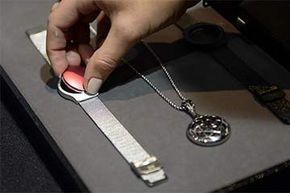Marty McFly and the rest of the "Back to the Future: Part II" gang had it all wrong. Flying cars and hoverboards are still a long way off, but wearable fitness trackers that can deliver a dizzying array of personal health-related data are here, and they intend to stick around. It used to be that our wrists were home solely to watches, charm bracelets and other sparkly baubles, but wearable tech has introduced numerous designed to arm us with information ranging from sleep habits to heart rate and number of steps per day. Among the marketplace leaders are Fitbit, Garmin, Nike, Jawbone and Moov, among many others [source: Palladino and Prospero]. The Misfit brand launched in 2011, and is largely known for providing more affordable fitness tracker options than many pricier counterparts. In fact, Misfit claims it created the first fully featured activity and sleep tracker under $50. In an industry that includes many models over $100, that's a pretty big dip in cost.
The company was established by several big names in the tech industry, including Sonny Vu, co-founder of AgaMatrix, Sridhar Iyengar, co-founder of AgaMatrix, and John Sculley, former CEO of Apple and Pepsi. They haven't always taken a conventional approach to product development, turning to a successful Indiegogo campaign to raise $800,000 in crowd funds to garner support for the Misfit Shine. The crusade was effective not only from a monetary perspective, but also because it increased awareness about the brand in a tech industry often dominated by the usual suspects, like Microsoft, Apple and Fitbit. And, though the company spent $20,000 on its pitch video, Vu thought the money was well-spent as its campaign was fully funded in a few hours [source: Luzar].
Advertisement
Fitness trackers like the ones Misfit manufactures have exploded in popularity thanks to our inherent love of numbers, data and constant self-scrutiny. Many people have goals (whether reasonable or lofty) for their personal health, and having information literally at our fingertips makes it easier to motivate or rationalize our habits. In fact, it's become such a phenomenon that industry experts are predicting the niche will grow from $1.92 billion per year value in 2014 to $2.8 billion in 2019 [source: Keller].


